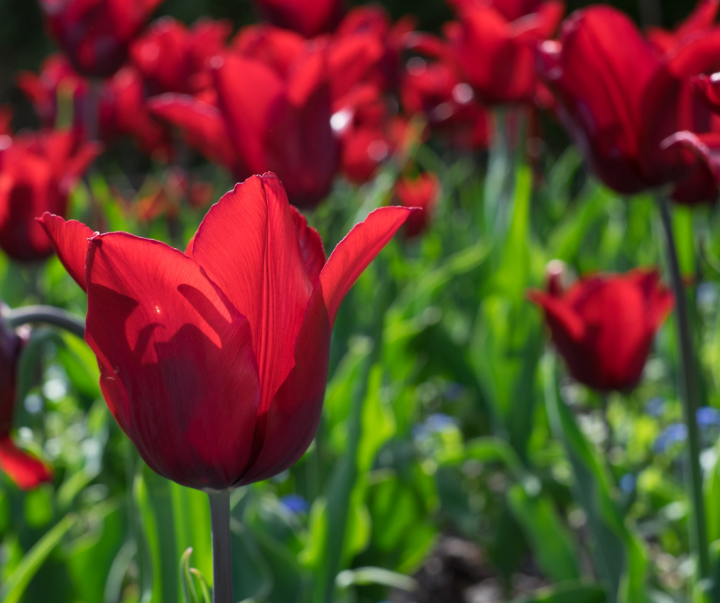
Tulip Aperture

Most photographers know about Bokeh. Herewith a couple of blossom renditions that I hope illuminate the subject, which is not that simple.
The pictures are effectively identical, except for the first is F5.6, the second F1.4 (shutter speeds 1/250 and 1/2900 respectively).
For those new to the subject · Bokeh is photo jargon for when everything in the picture is out of focus, except for the subject. Things that encourage it include using a wide aperture (when the “F-stop” number is, say, 2.8 or below), using a longer lens (although these shots show that 35mm is good enough), and having a larger sensor.
The conventional wisdom is that for “portrait-style” photography, bokeh is a win because the out-of-focus bits make an attractive background that doesn’t distract from your subject. Conventional wisdom is usually correct.
Difficulties · All the things that make good bokeh are things that are hard to do in a mobile-phone camera. Android is trying to work around this with Lens Blur, but it requires a certain amount of extra ceremony.
The mechanism behind bokeh is of course depth-of-field, and when you squeeze down the DoF, you make it way, way easier to get an entirely blurry and thus useless picture. If you look a the high-bokeh tulip, the blur extends to the petals that stretch out left and right. Quite possibly a little more DoF would have worked better.
And anyhow — gasp, heresy — I like the lower-bokeh version better anyhow because I find that the way the background tulips echo the primary’s shape amuses my eye.
Photography is really a simple discipline; there are remarkably few variables that go into making a picture. It’s the world that makes it complicated.